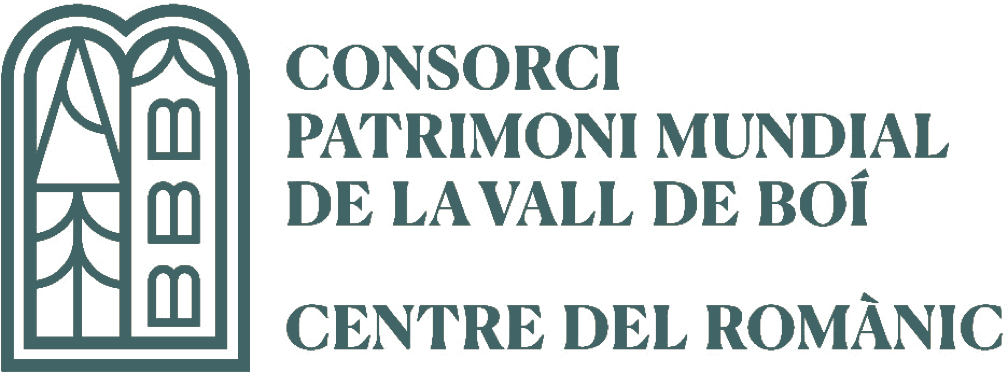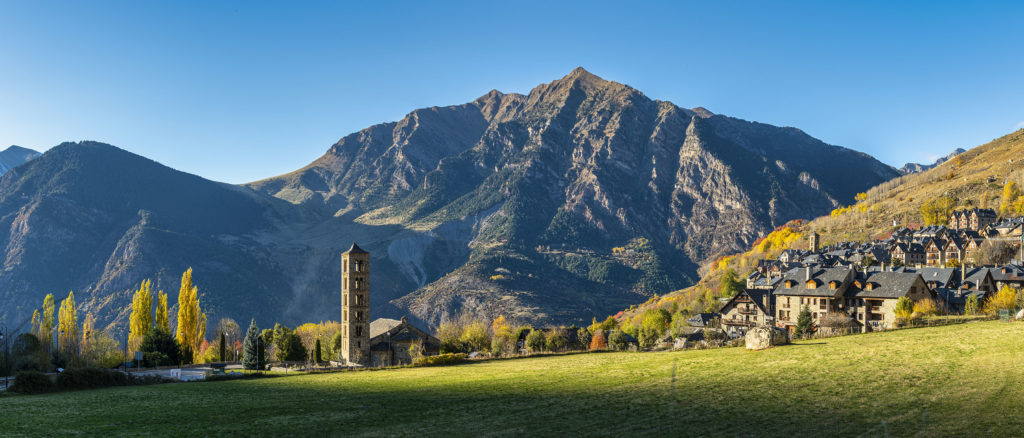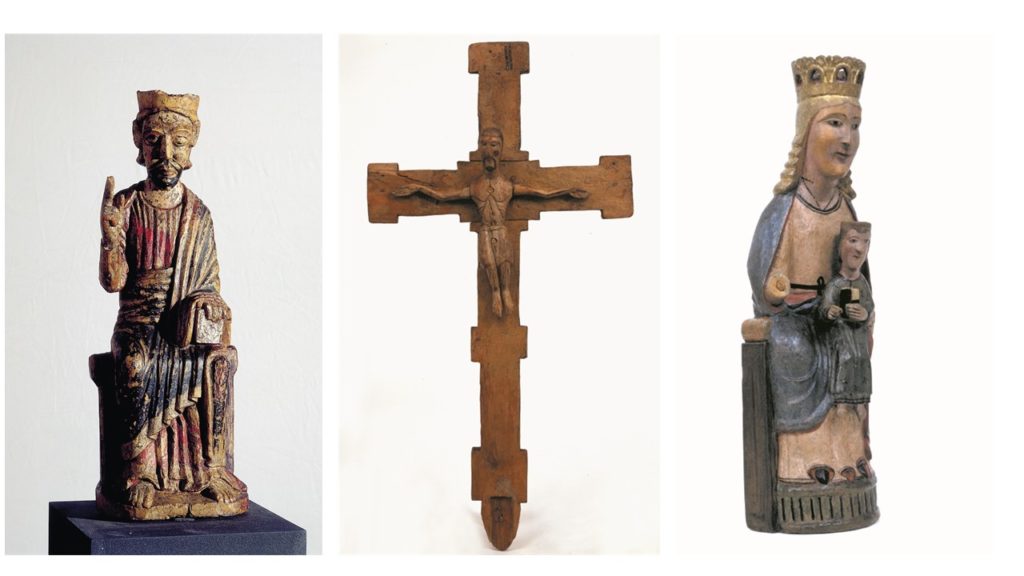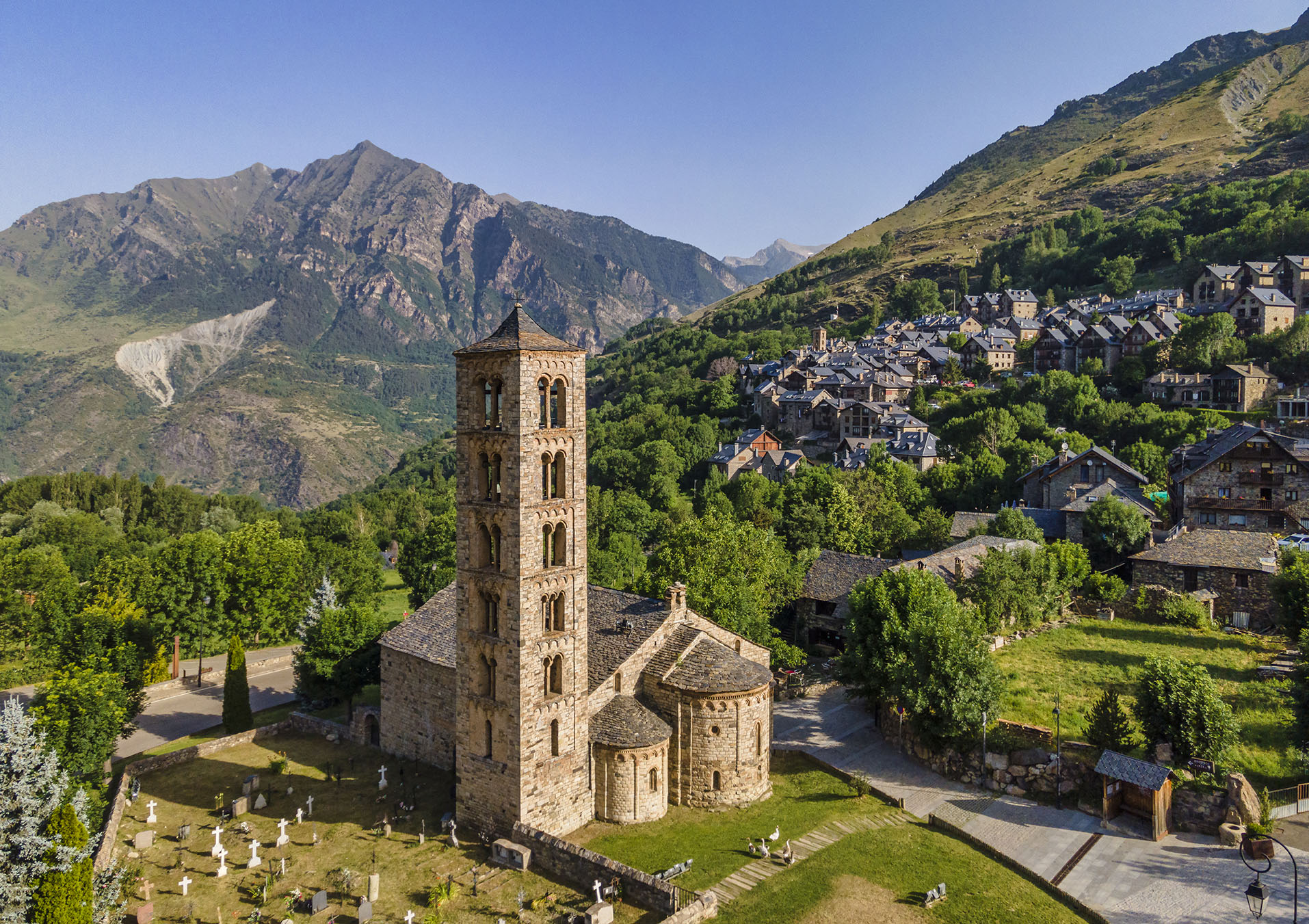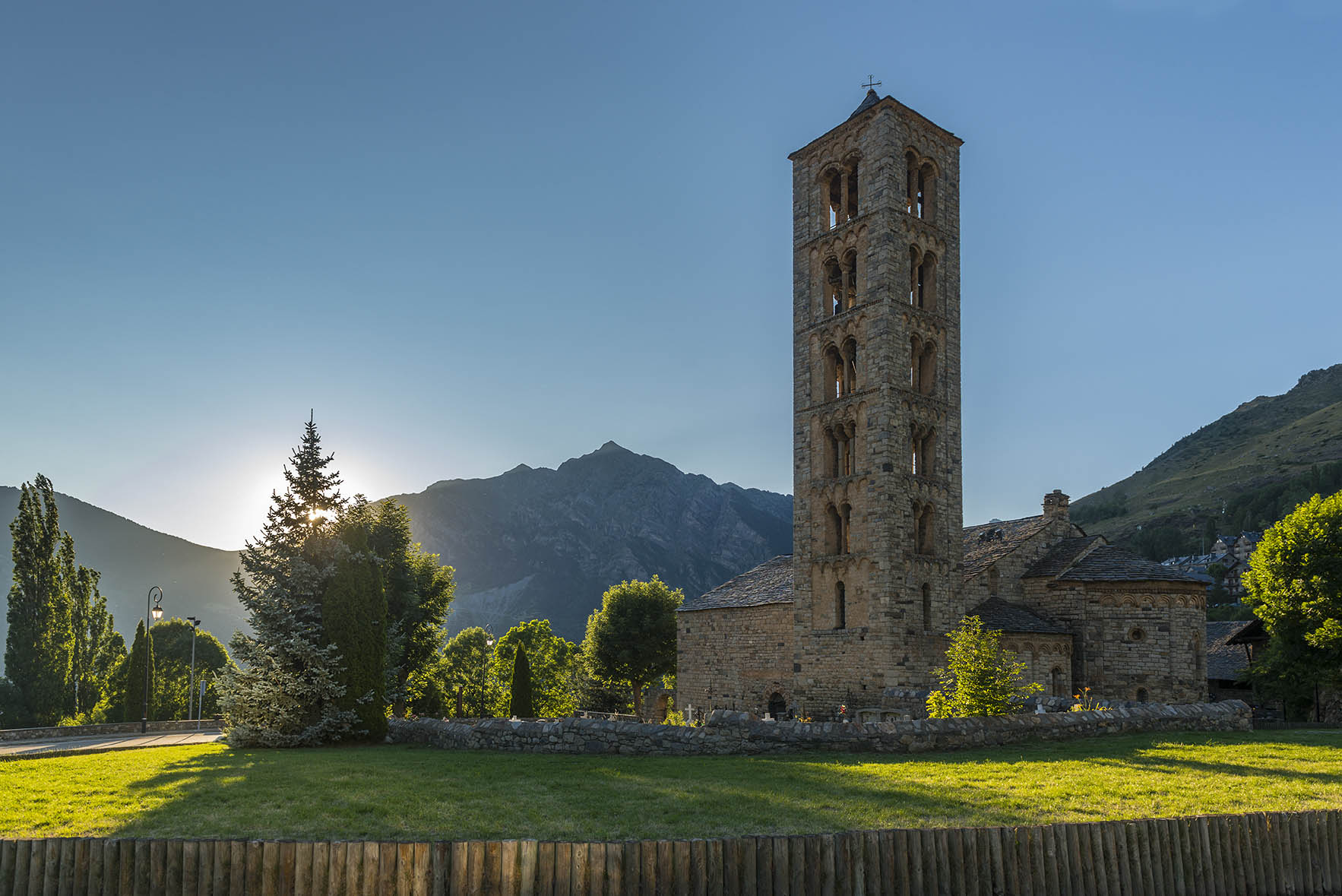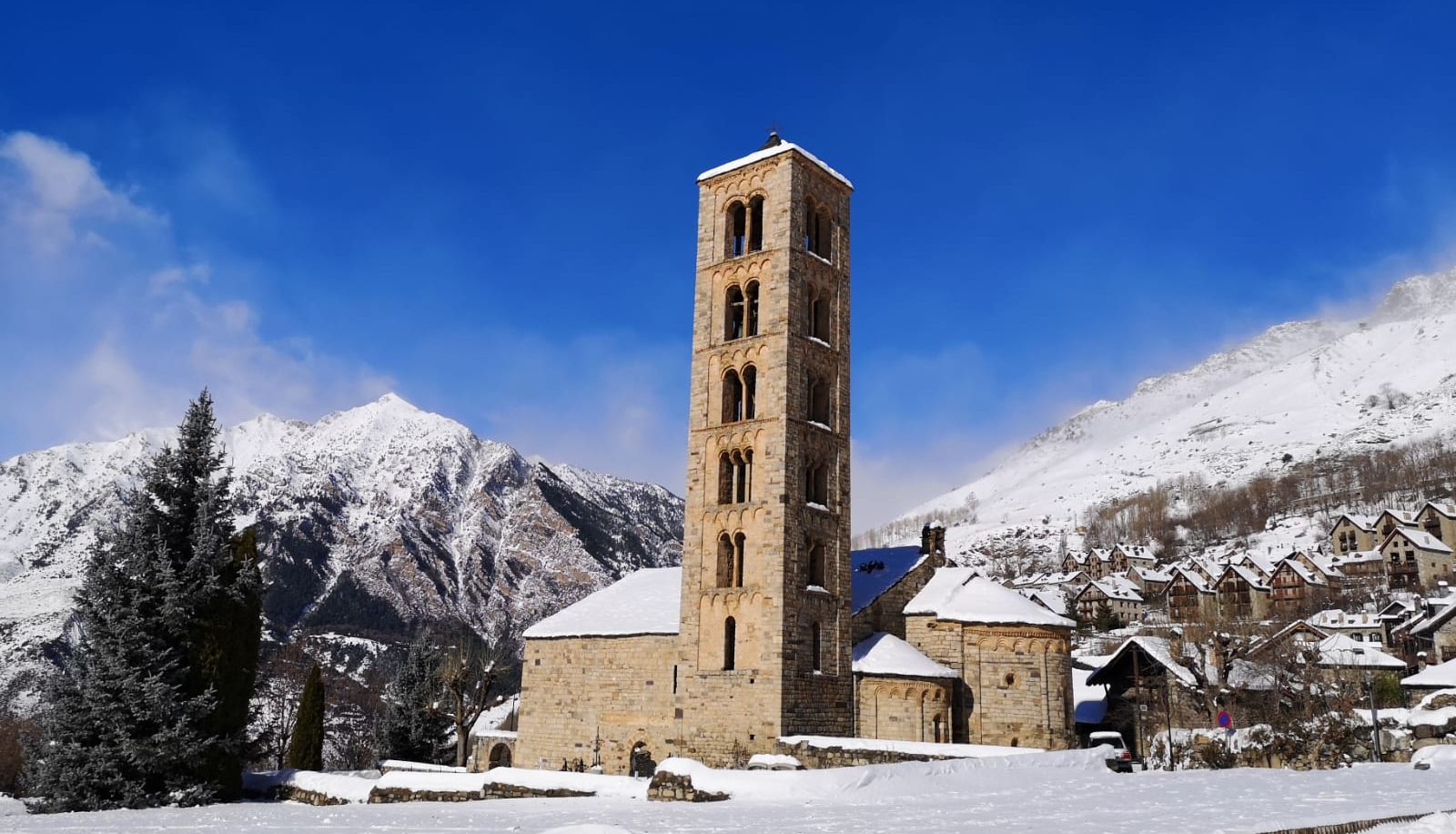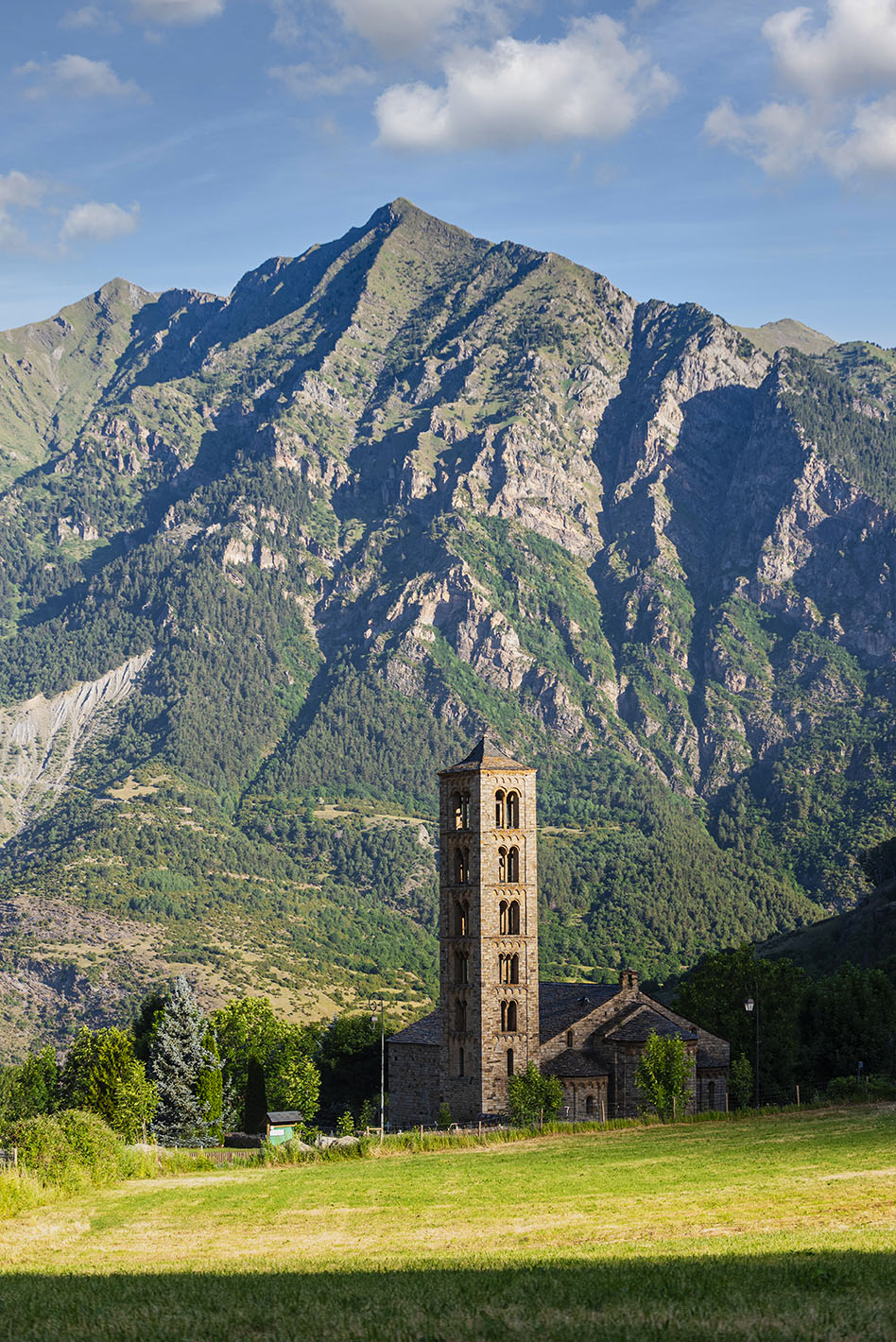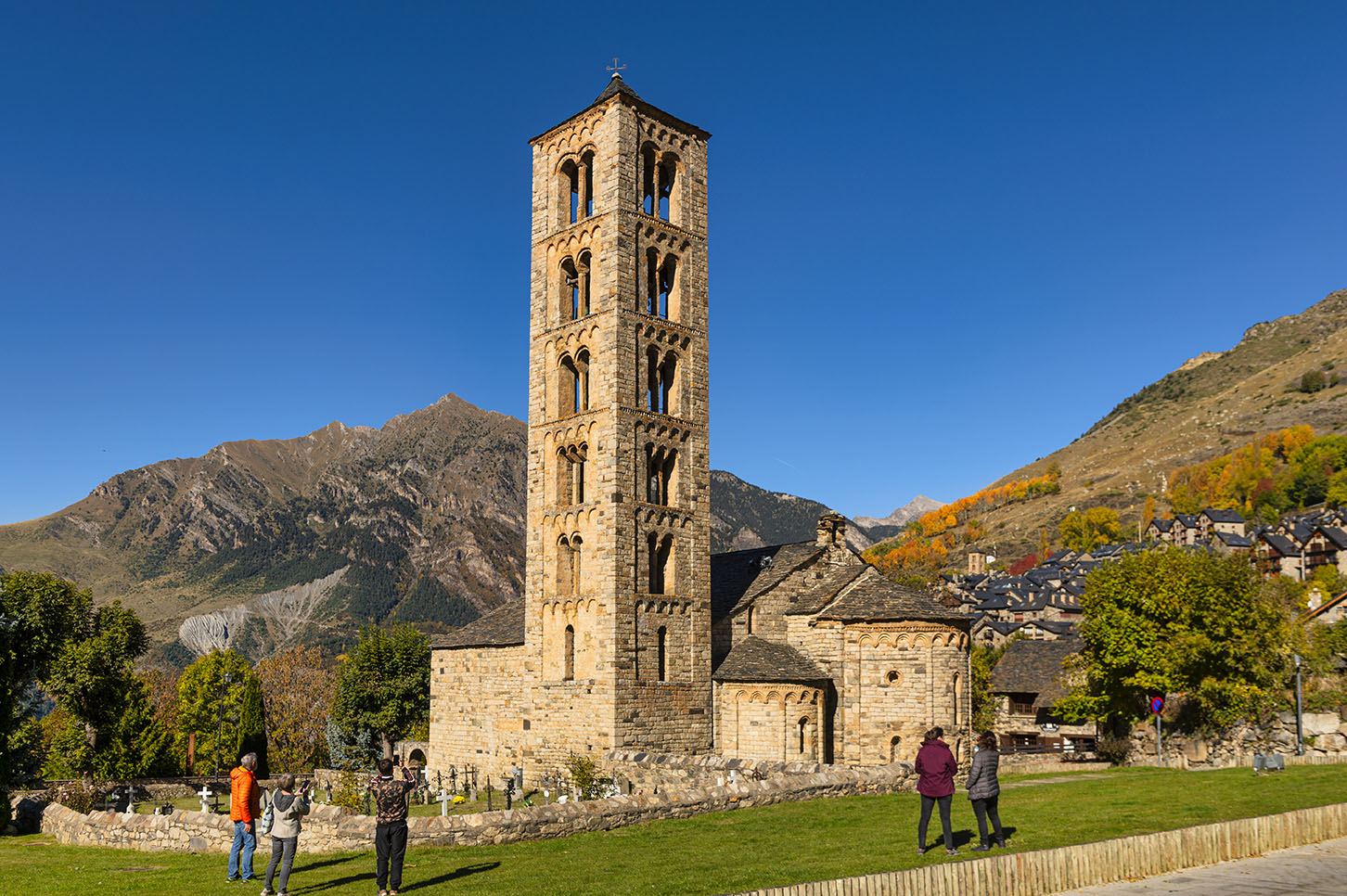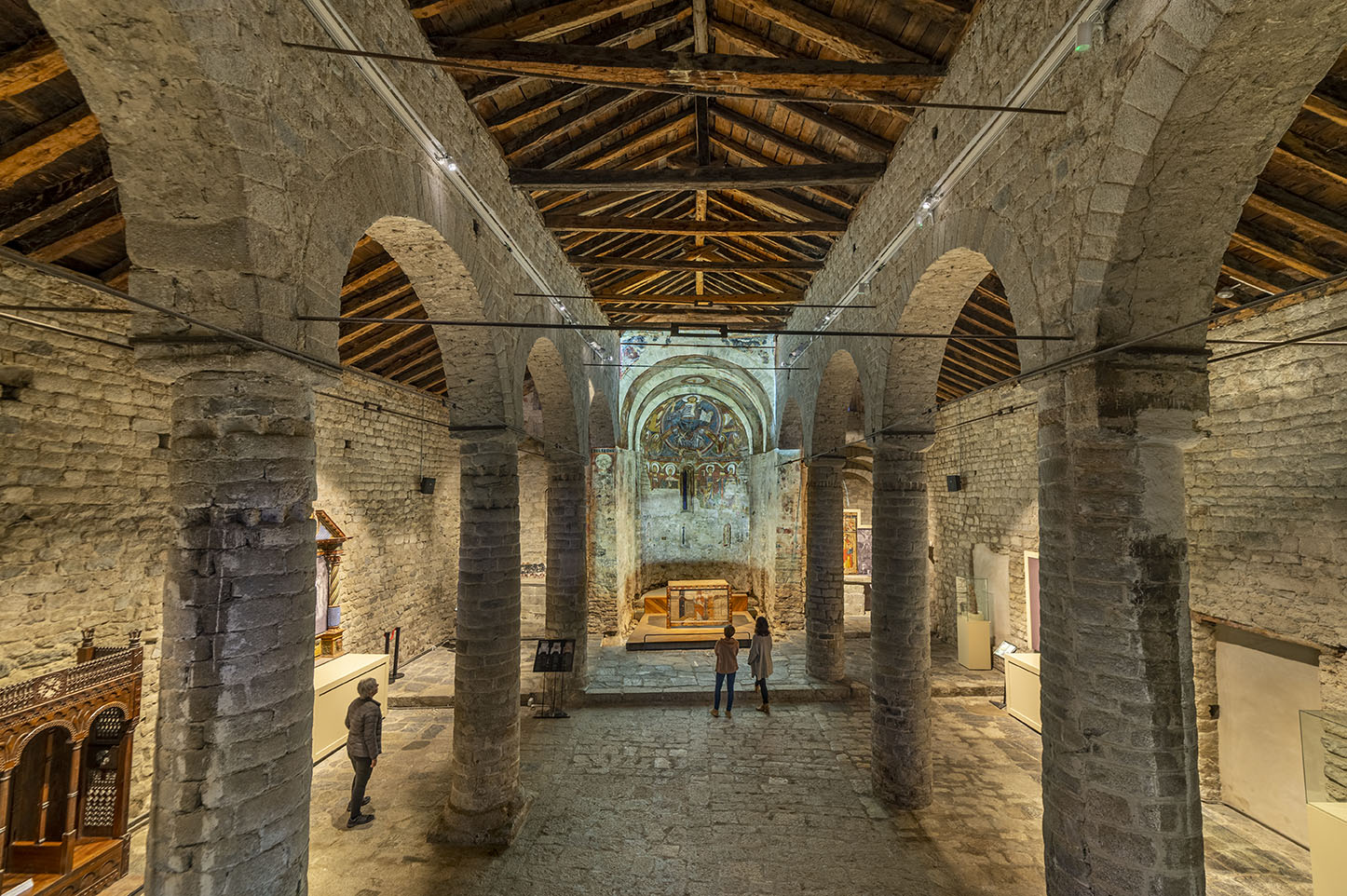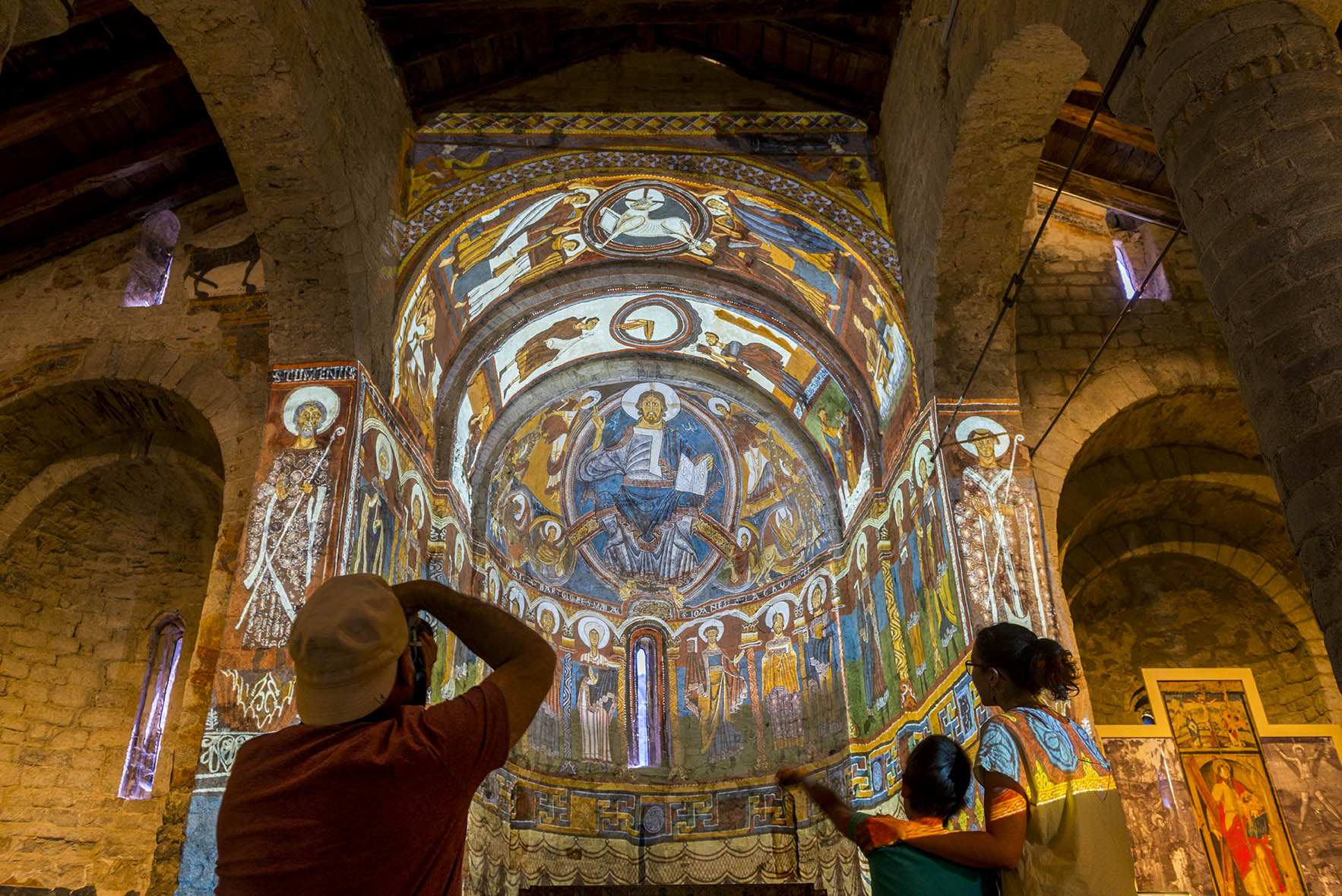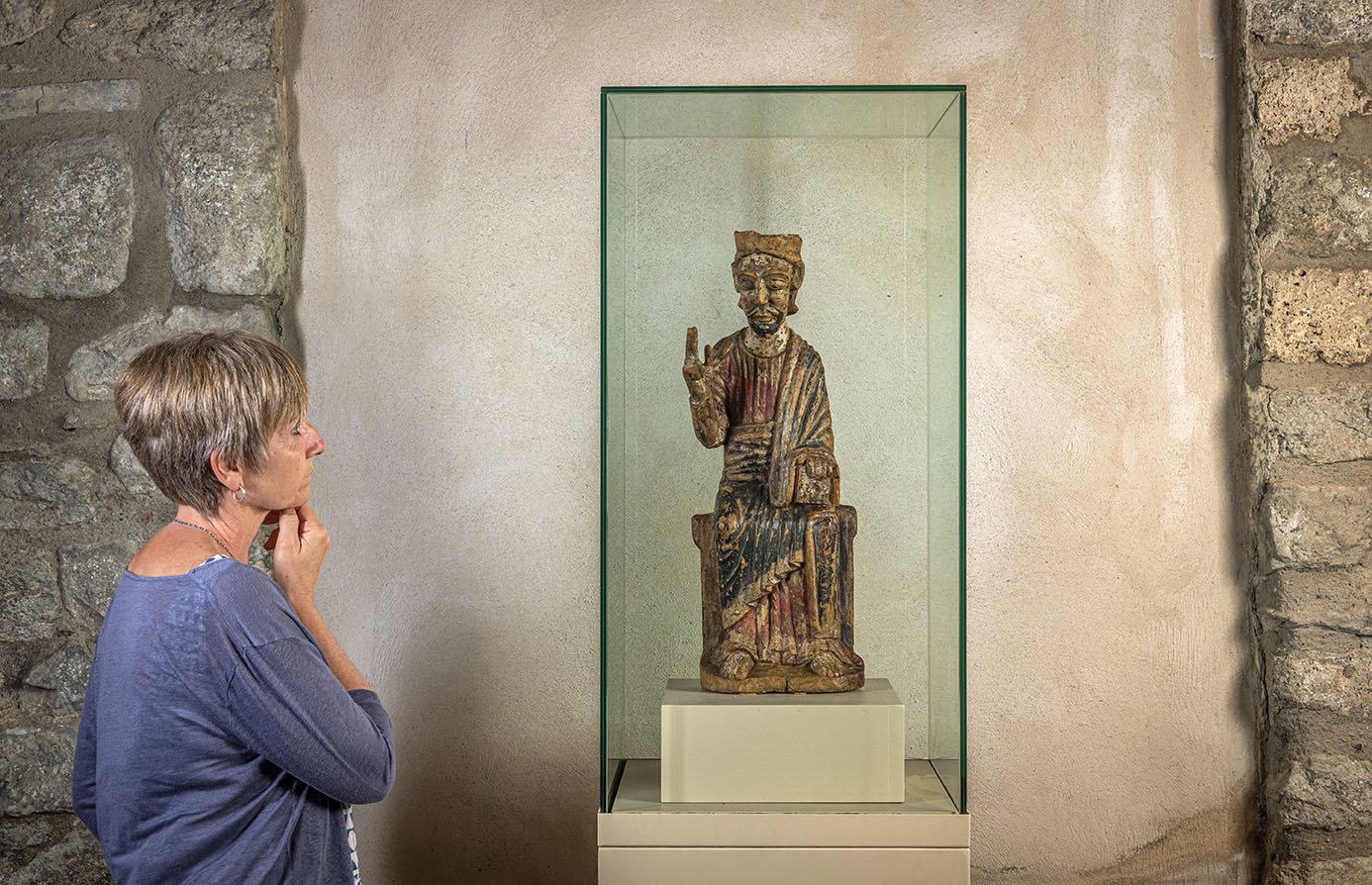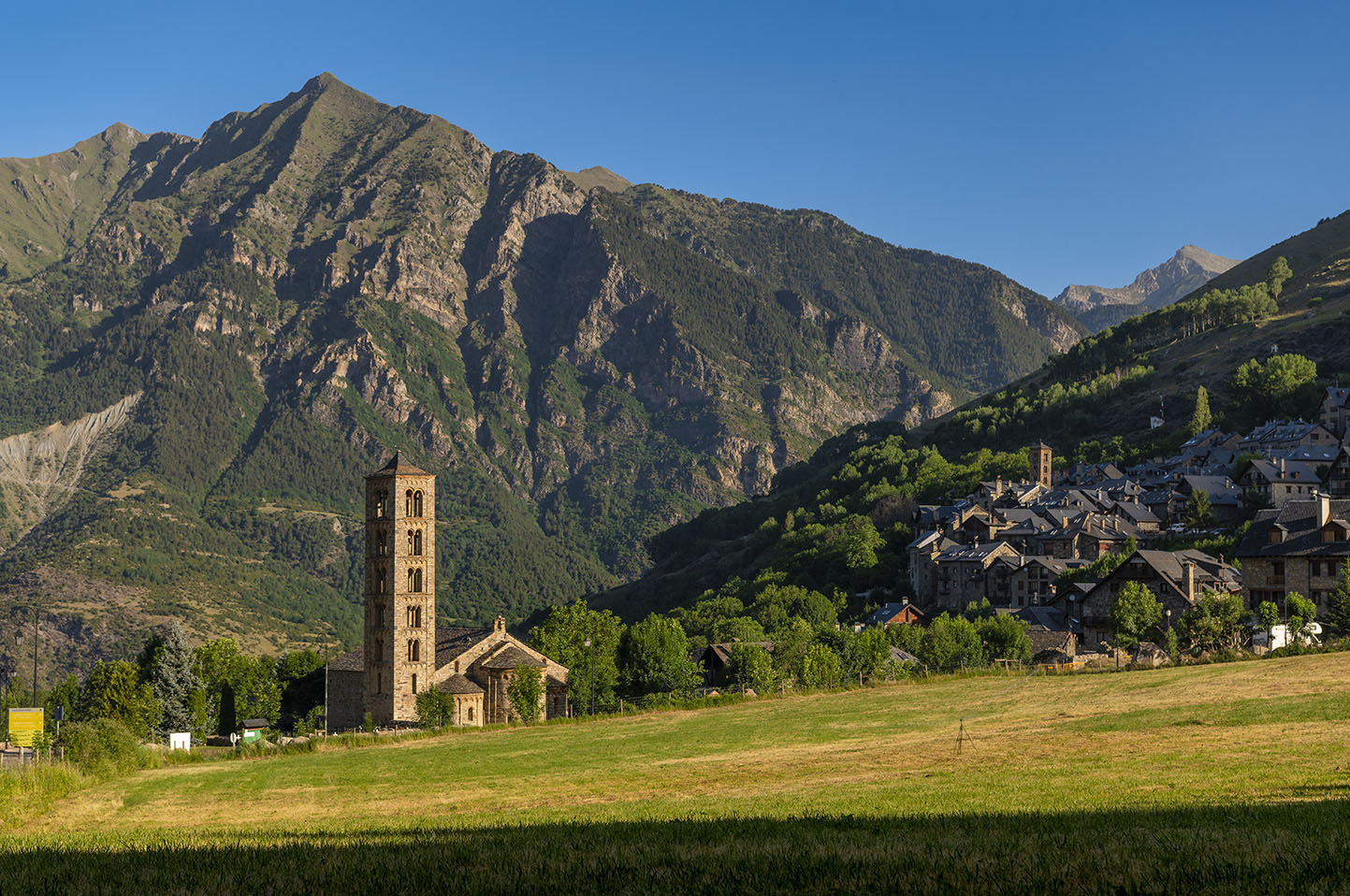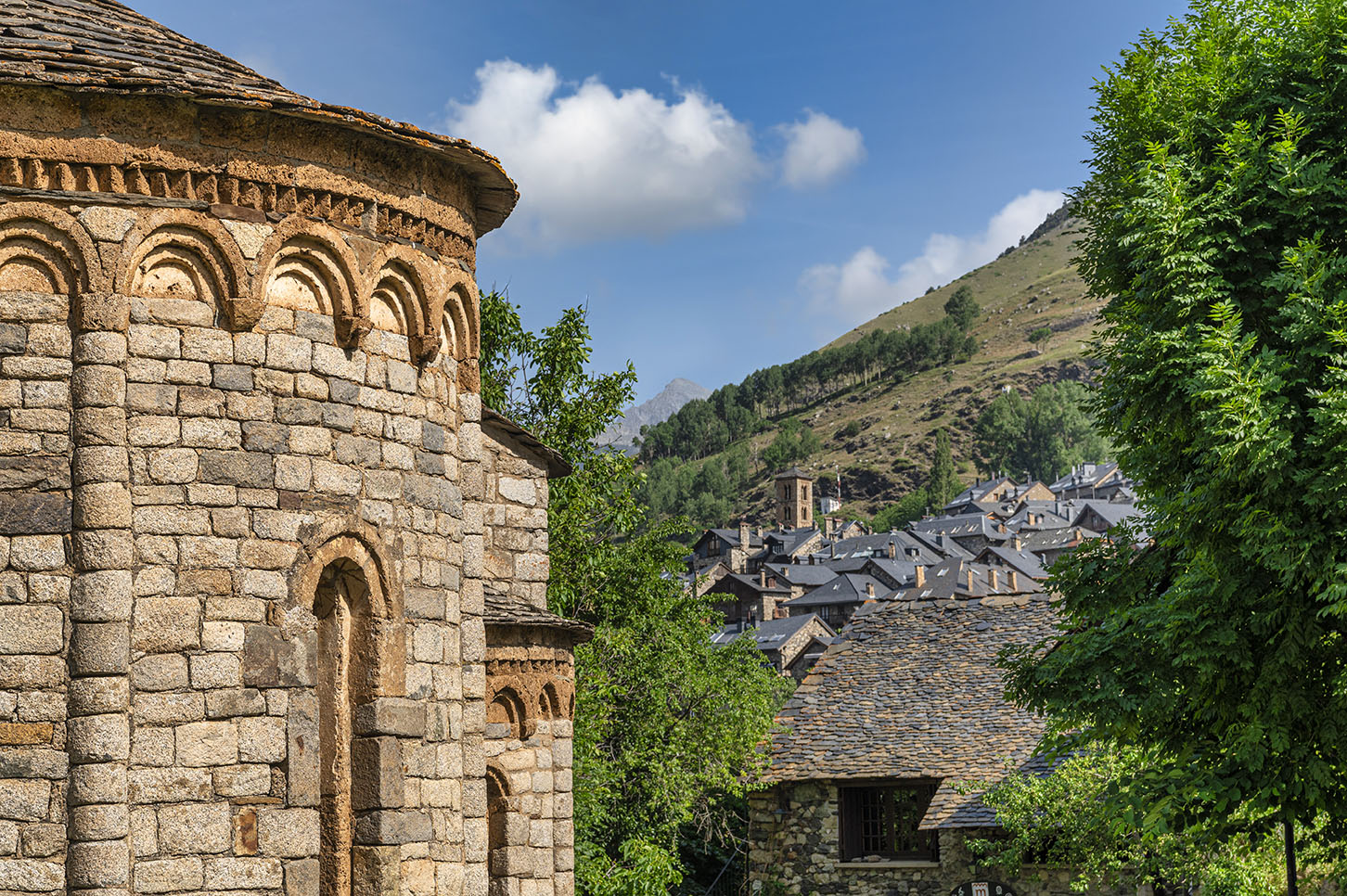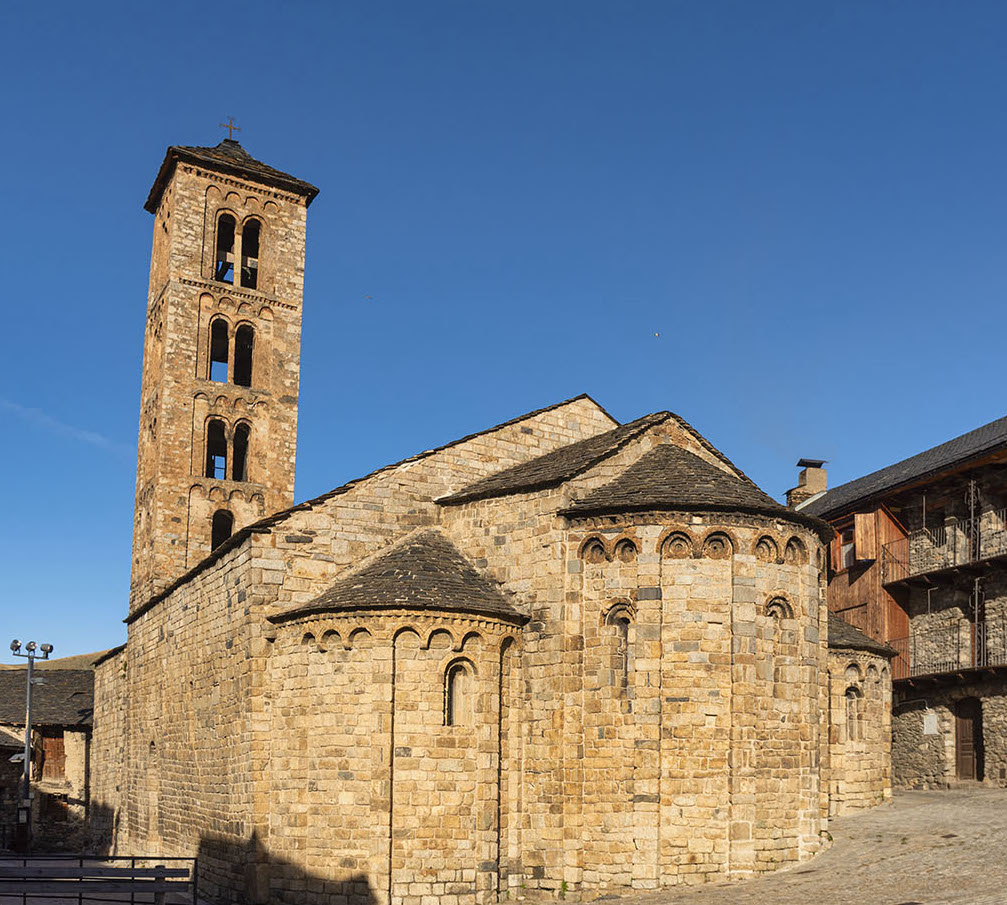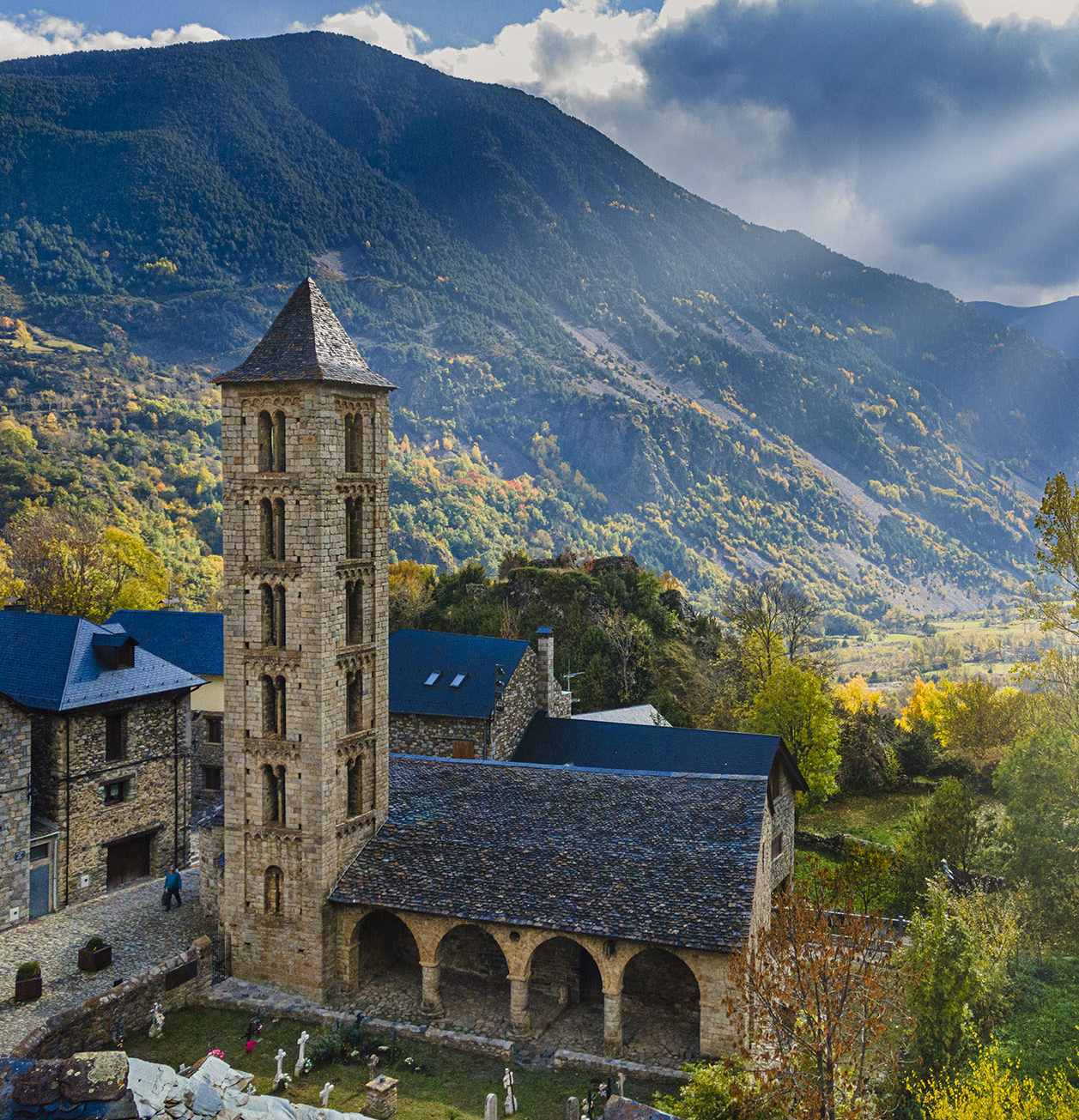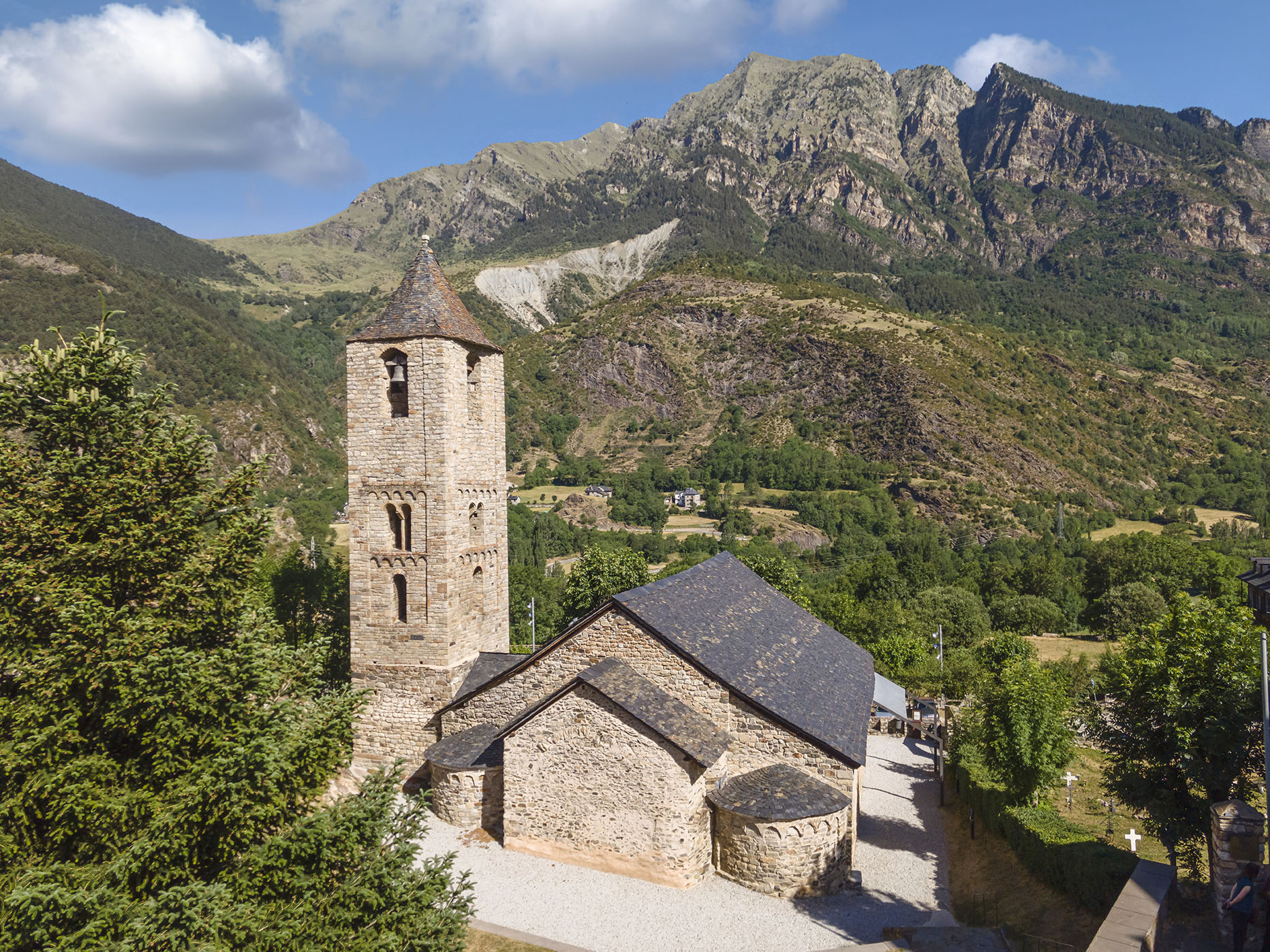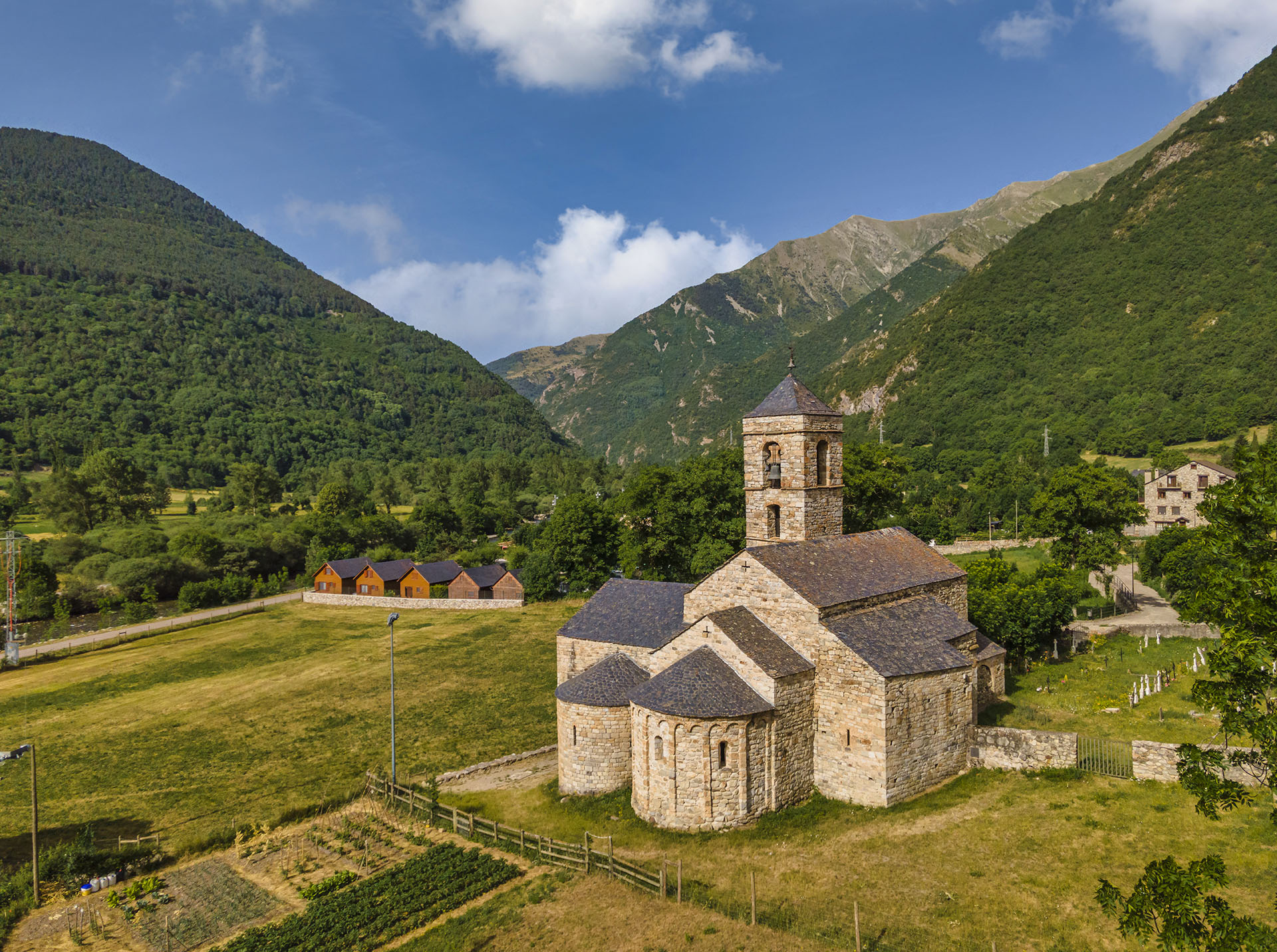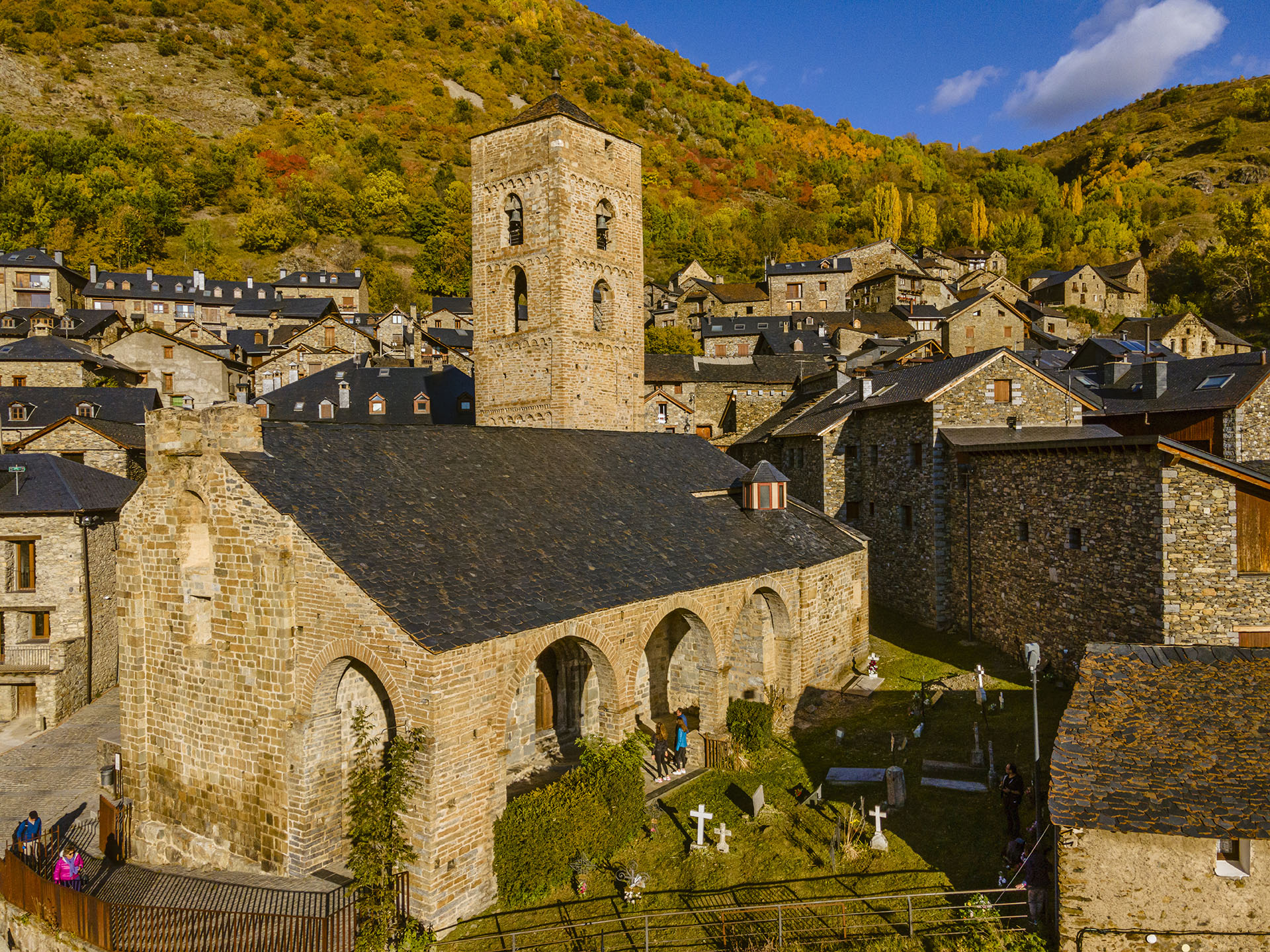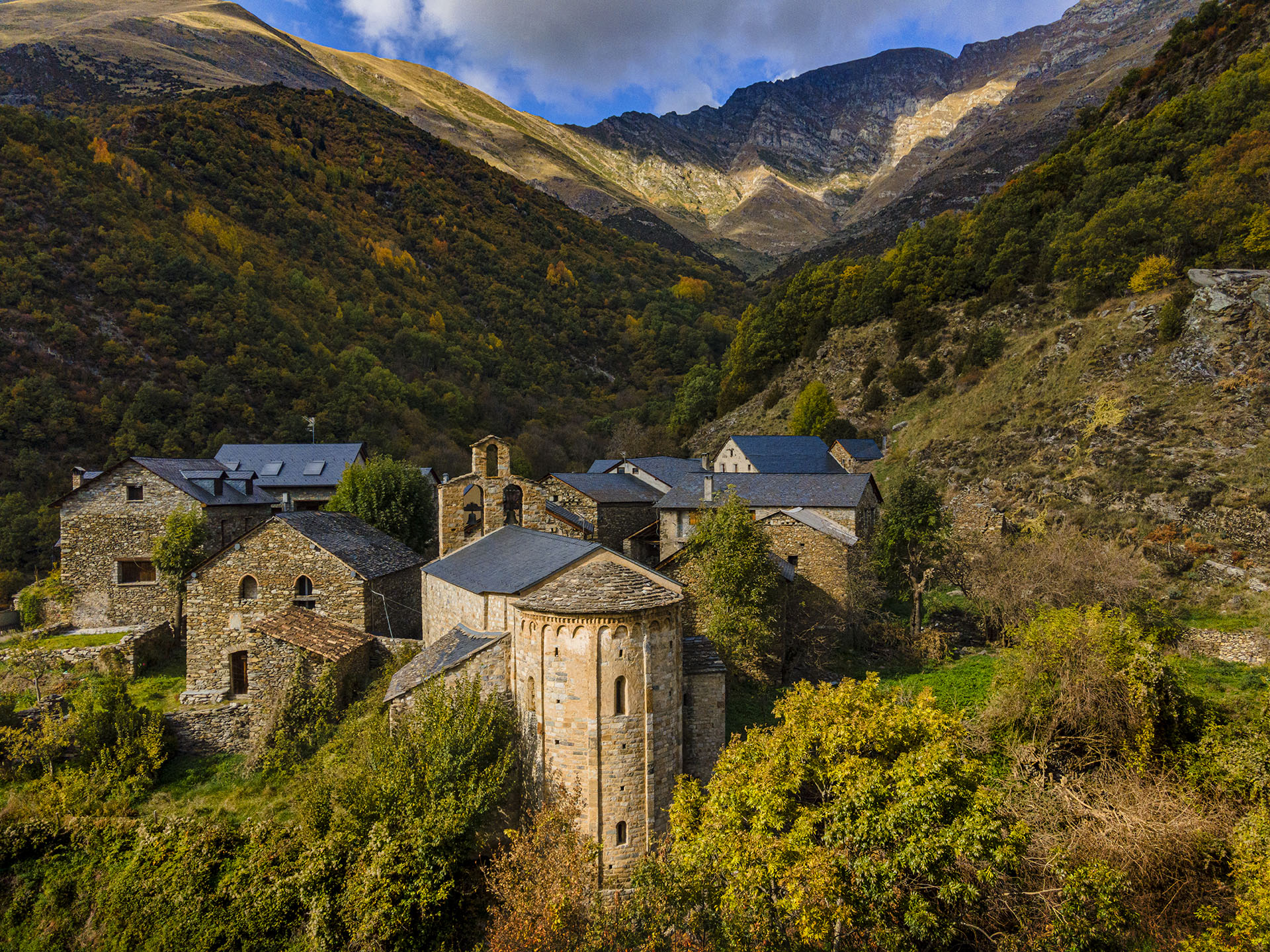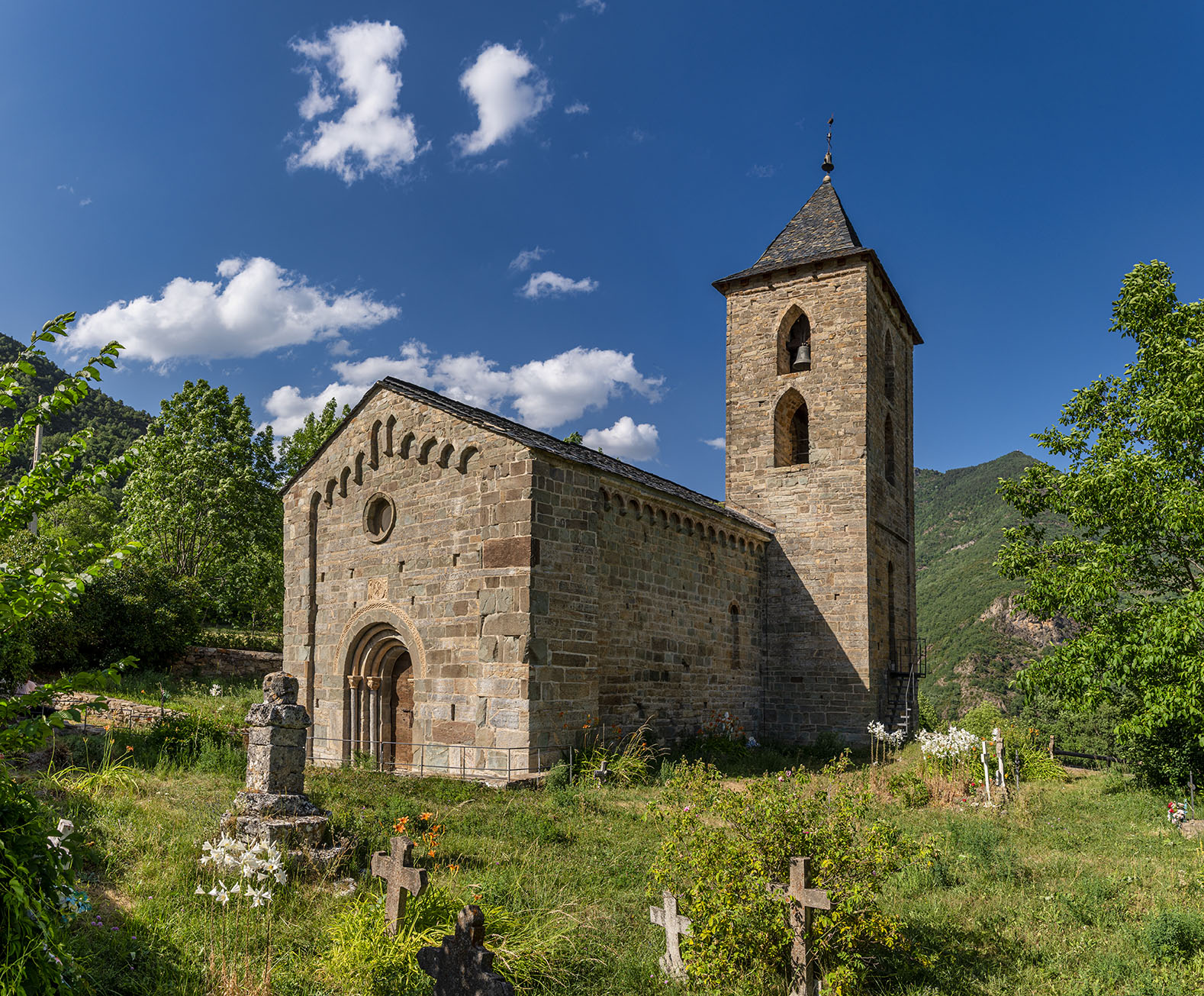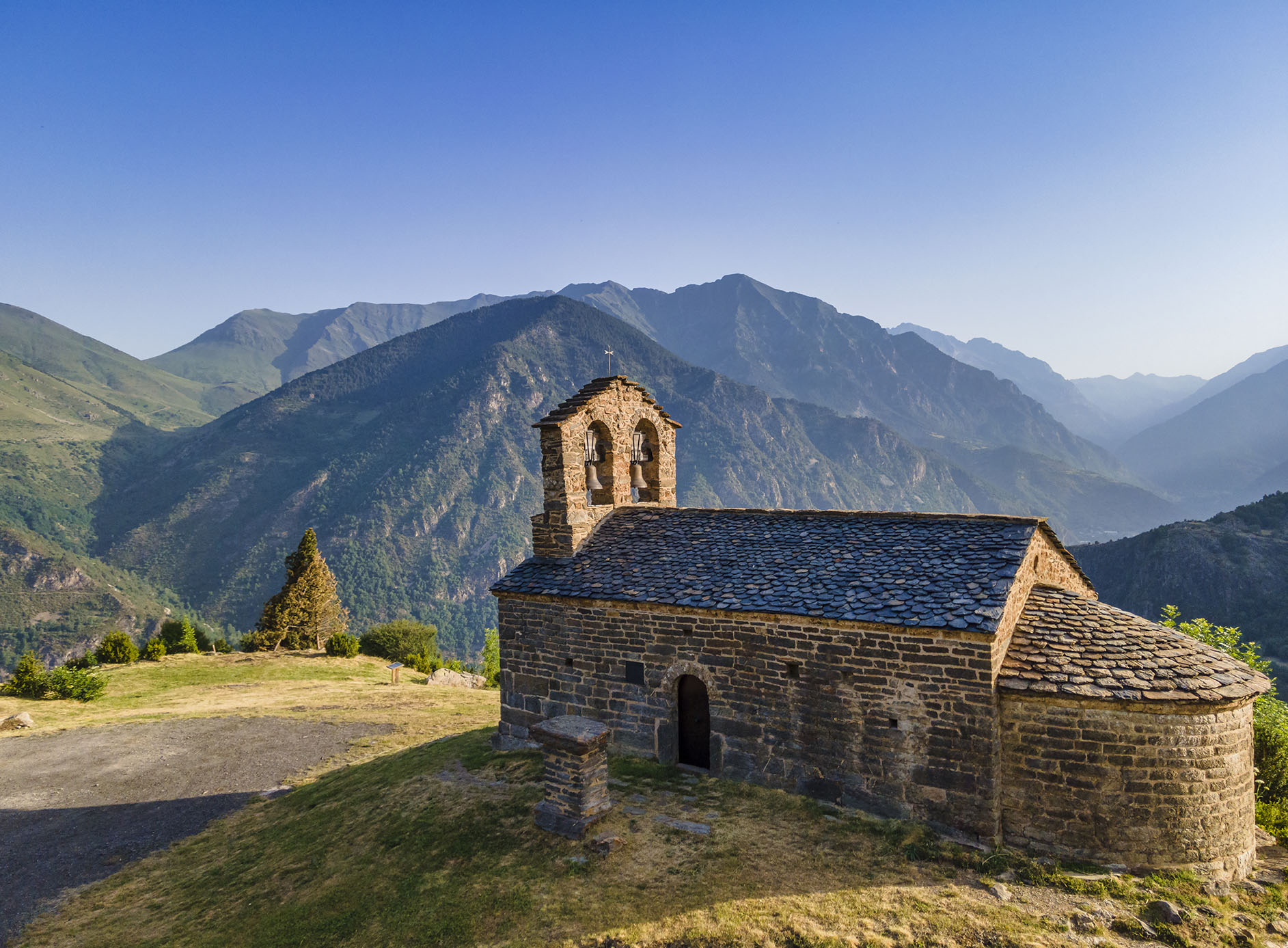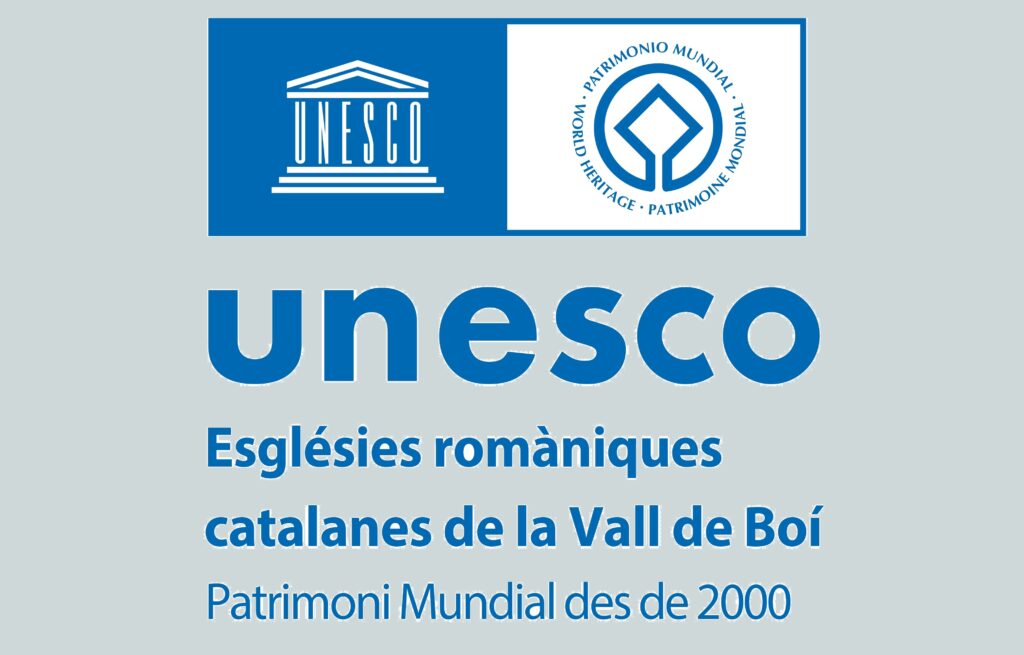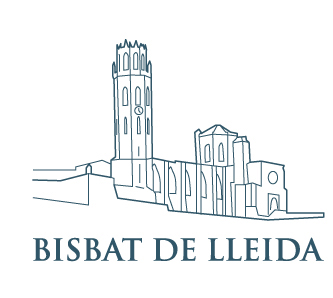Together with these fragments of original paintings and the deep layer, when you enter Sant Climent de Taüll you’ll see the paintings currently preserved at the National Art Museum of Catalonia projected by means of the video mapping technique.
As a result, you can now see all the paintings by the Master of Taüll that have survived until the current day together at the Church of Sant Climent de Taüll, combining the original paintings with the projections.
You will understand the meaning of these paintings with a complete image of all the fragments that have survived until the current day:
From top to bottom, the apse is divided into three areas that are symbolically associated with Heaven, above, where the Divinity is displayed, the middle, the space between heaven and earth, where we can find the holy characters, intermediaries between God and man, and, below, the Earth, where the men are.
The whole composition abides by a geometrical scheme dominated by a large vertical axis. The themes and characters that were inspired by different texts from the Bible are symmetrically distributed on each side of this vertical axis, including the Apocalypse, the last book of the New Testament that prophesises the end of the world.
In Romanesque painting each element has its place determined by its importance and the architectural space, so they are organised in order of their significance.
In Heaven, the Christ in Majesty, the Hand of God and the Lamb with seven eyes.
Surrounding the image of Christ, the four Evangelists, two of them inside circles that evoke the fiery wheels of the chariot of Yahweh (God). And, on each side, a seraphim and a cherub.
Between Heaven and Earth, under the arches of the Celestial Jerusalem, the Virgin Mary, Saint John and the other apostles. At the ends, Saint Clement and perhaps Saint Cornelius.
And, above everything, the central element, the most important one: the Christ in Majesty. Its depiction is far removed from reality and the result is a non-naturalist, rigid, frontal, timeless and schematic image. To highlight the above, its forms are outlined in black and filled with bright and contrasting colours. But the details, the expressions on the faces, the folds on the clothing and the cornices were of a singular and unique mastery at the time.
The figure of Christ in Majesty inside the mandorla observes us seated in the accolade, with its feet on the sphere that represents the earth.
Christ Almighty blesses with his right hand and holds an open book in his left hand bearing the inscription “EGO SUM LUX MUNDI”: I am the light of the world, the light that reveals to us the knowledge of God.
On either side of Christ’s head appear the letters Alpha and Omega, the first and last letters of the Greek alphabet, symbolising that all things begin and end in God.
